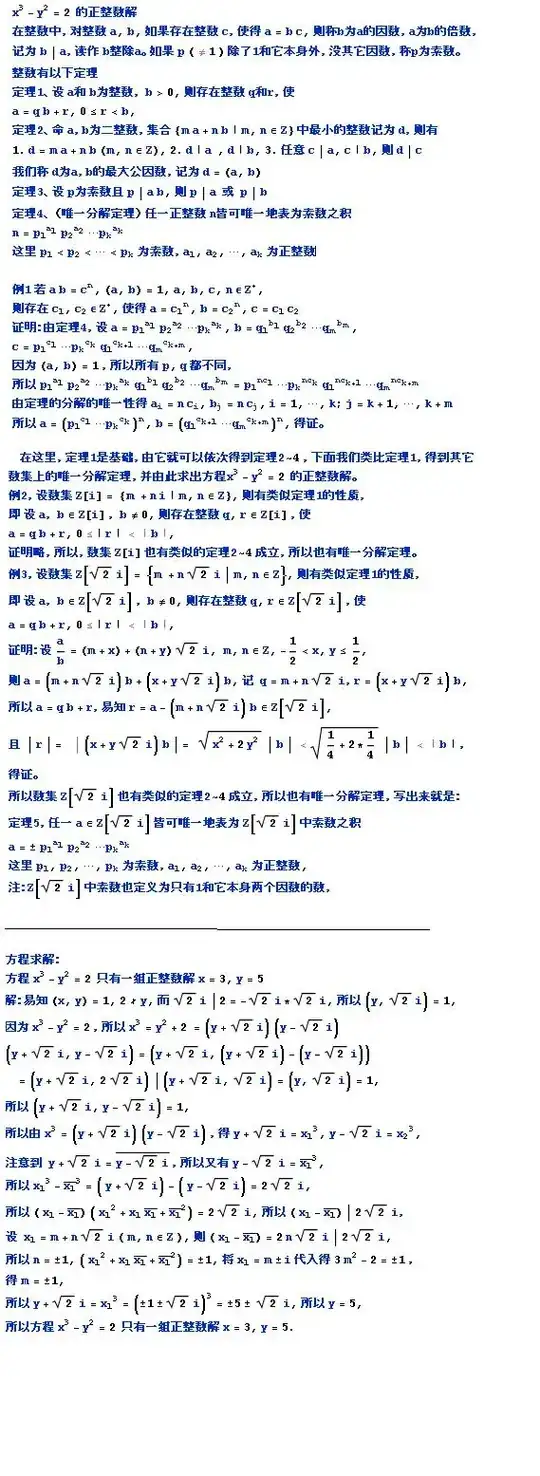Fermat claimed that $x ^ 3-y ^ 2 = 2$ only has one solution $(3,5)$, but did not write a proof.
Who can provide a proof that a high school student can accept?
Thank you for your help
An answer given by the Chinese friends: similar to the integer division algorithm, but the Chinese, in front of first give some basic properties of the final is proved.Please look at.
